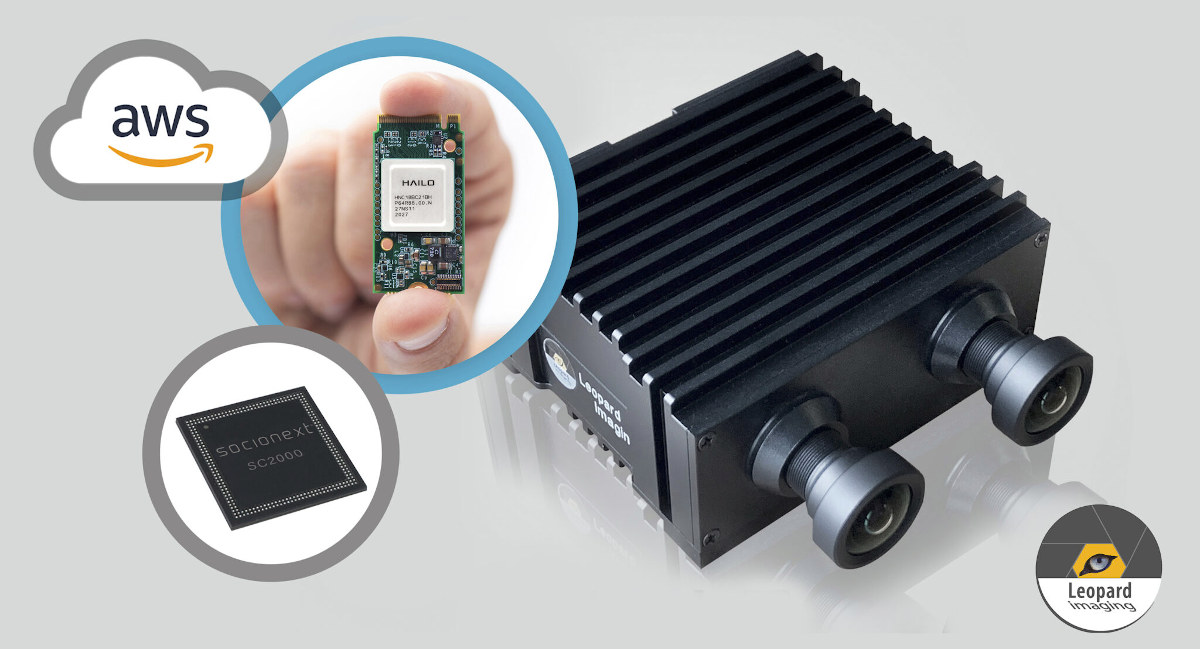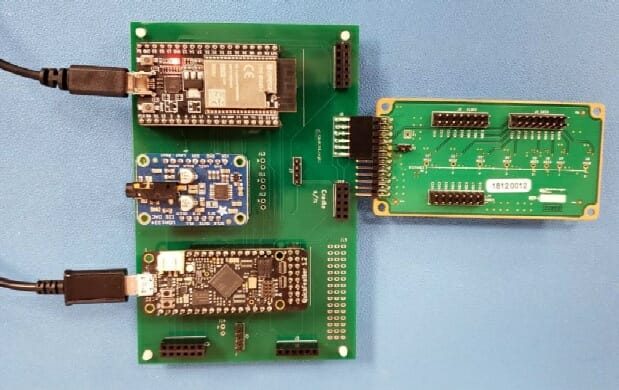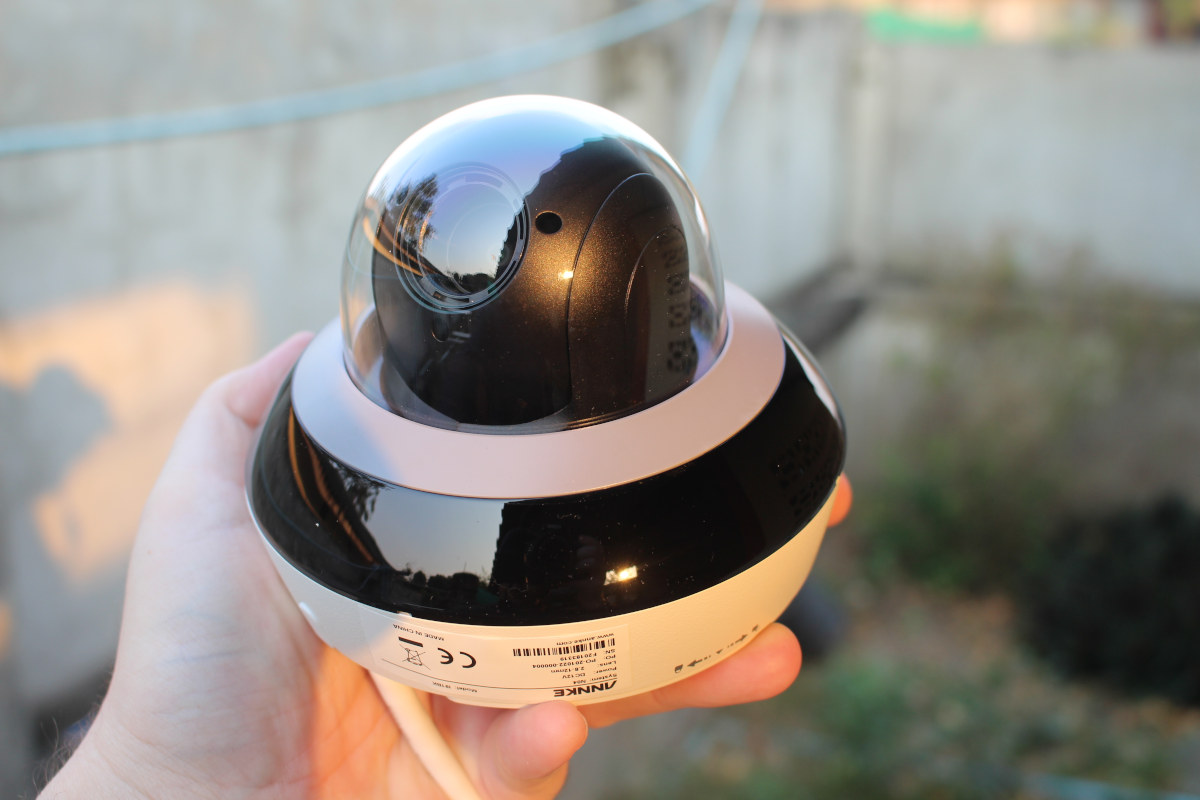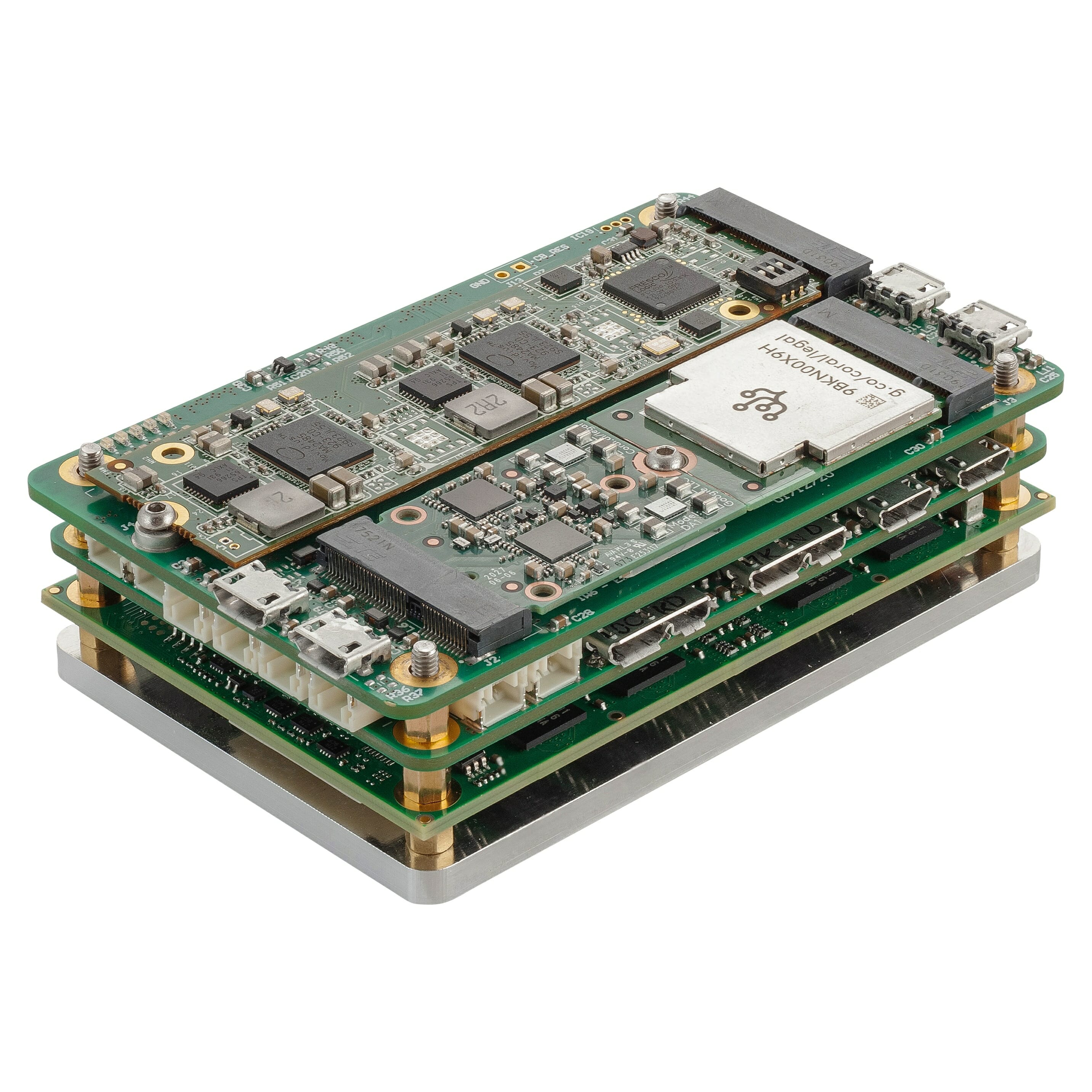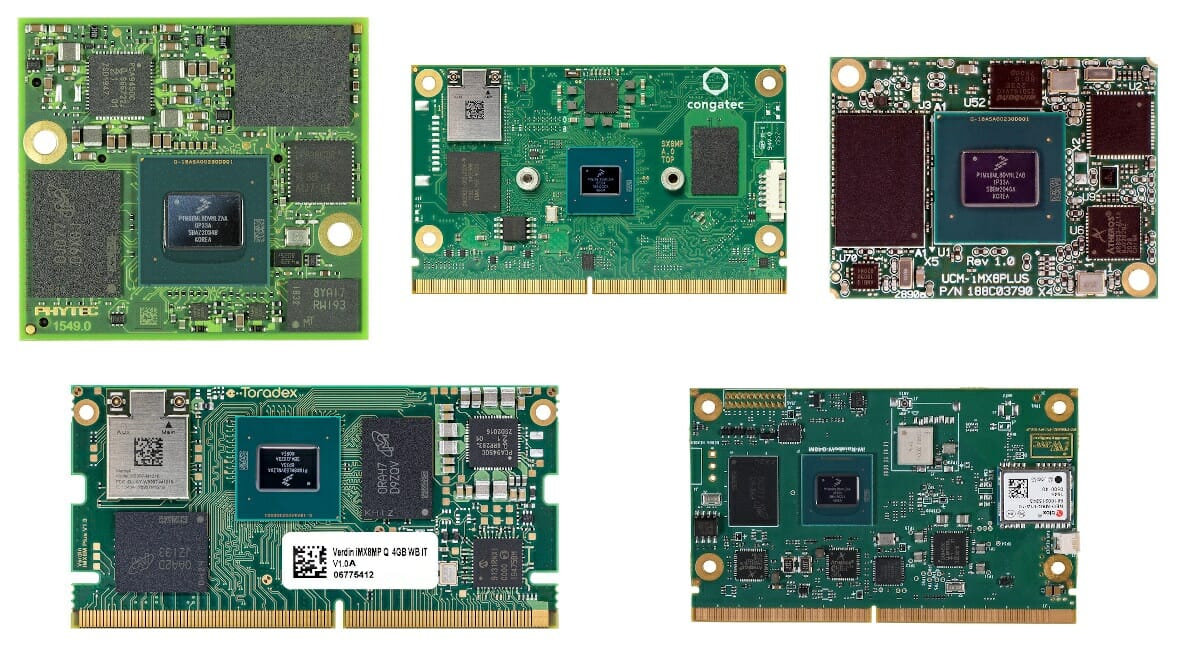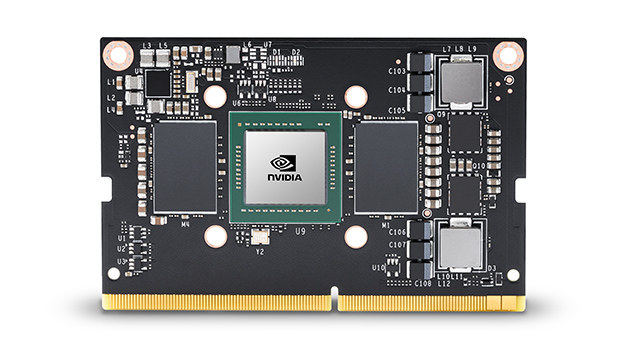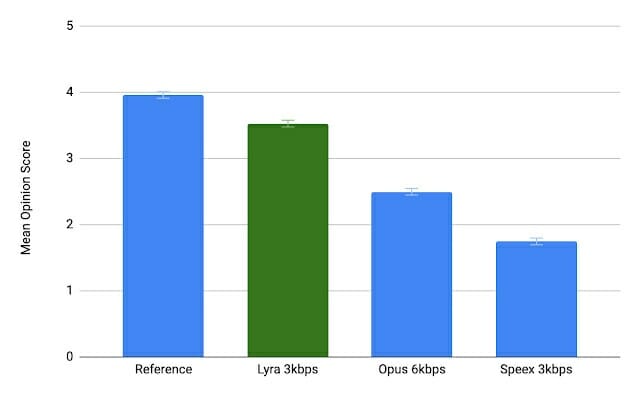We’ve previously written about Hailo-8 AI accelerator delivering up to 26 TOPS at low power (3 TOPS per watt), and found in AI edge systems such as Foxconn BOXiedge server powered by a Socionext SynQuacer SC2A11 24x Cortex-A53 cores SoC and capable of analyzing up to 20 streaming camera feeds in real-time for video analytics. Leopard Imaging has now created a much more compact Edge AI processing solution with EdgeTuring based on Hailo-8 M.2 card and Socionext SC2000 4K camera SoC, and designed for low-power video analytics. EdgeTuring features and specifications: Camera SoC / Image Processor – Socionext SC2000 quad-core Cortex-A7 processor @ 650MHz with 4Kp30 H.265/H.264 encoder, up to 1.2 Gigapixel per second processing, LPDDR-3 memory (PoP) AI Module – Hailo-8 M.2 Module for up to 26 TOPS Camera Dual camera but only one sensor works for AI Sensors – 2x Sony IMX477 CMOS Image Sensor, diagonal 7.857 mm […]
QuickLogic’s Hearable Reference Design enables Alexa Voice-Initiated Devices
Last year we saw QuickFeather board featuring EOS S3 Cortex-M4F MCU with embedded FPGA, which was a crowdfunding project. This year the company has launched its smart hearable reference design based on a similar processor by QuickLogic. The device is dedicated to “Voice-Initiated, Hands-Free, Alexa Built-In Devices with Close-Talk Support.” QuickLogic’s smart hearable reference design is based on the company’s Open Reconfigurable Computing (QORC) which supports a complete open-source set of development options for the MCU and FPGA devices. It is also built on the EOS S3 Voice Processor and the QuickFeather open source development kit. This can enhance the user experience with a longer battery life of the device. The EOS S3 Arm Cortex- M4 processor features Low Power Sound Detection (LPSD) technology along with DSP Concepts’ TalkTo noise suppression and beamforming technology for the directional transmission of signals. It also comes with Alexa Wake Word engine technology, an […]
ANNKE CZ400 AI security camera review – Part 1: Specs, unboxing and teardown
We’re starting to see more and more security cameras with built-in AI features such as Reolink RLC-810A 4K camera with people & vehicle detection or the lower cost Vacom Cam Full HD camera with person detection only, which I have not reviewed yet due to some technical issues. I would not buy a camera without AI now as such features greatly reduce false positives. Another model has now come my way with ANNKE CZ400 (aka I91BK) 2K security camera that comes with even more advanced AI-accelerated computer vision features with not only face detection, but also intrusion detection, line crossing detection, region entrance detection, region exiting detection, object removal detection, unattended baggage detection, and audio exception detection. In this first part of the review, we’ll check the specifications, the content of the package with an unboxing, as well as a partial teardown that is needed to install a microSD card. […]
This mini-computer is set to outperform NVIDIA Xavier by eight times
When it comes to high-end AI-edge computer boards, we have seen Hackboard 2 with support for Windows 10 operating system and optional 4G or 5G cellular connectivity. Fast Sense Studios is a Russian-based startup designing powerful on-board computers to bring edge AI capabilities to mobile robotics. At Embedded World 2021, the company has unveiled the Fast Sense X Robotics AI Platform that integrates the power of six computers into a single module. The company claims the newly launched edge AI computer outperforms the NVIDIA Xavier with over 8x higher performance in mobile robots thanks to the advanced DNN inference hardware. Apart from the Intel UHD GPU, the computer also integrates up to 3 Coral Edge TPU devices and up to 2 Myriad X devices allowing it to give optimum results even when on heavy workloads. “We believe in the future where reliable physical agents become relevant for routine tasks that […]
NXP i.MX 9 processors to integrate Arm Ethos U-65 microNPU, EdgeLock secure enclave
NXP i.MX 6 and i.MX 8 processors are widely used in industrial boards and systems-on-module, and the company has now teased a new family with i.MX 9 processors integrating Arm Ethos-U65 1 TOPS microNPU, as well as the company’s EdgeLock secure enclave for increased security. The company did not provide that many technical details, so we still don’t know which CPU cores, GPU, and exact peripherals will be found in the processor. But we do know the i.MX 9 processors will be manufactured with a 16/12nm FinFET class of process technology optimized for low power, and features the “Energy Flex” architecture that combines “heterogeneous domain processing (independent applications processor and real-time domains with a separate low-power multi-media domain), design techniques, and process technology to maximize performance efficiency”. That means most blocks of the processor can be turned off for low power audio or CAN networking use cases, and other industrial […]
It’s raining i.MX 8M Plus systems-on-module at Embedded World 2021
NXP introduced i.MX 8M Plus AI SoC with a built-in 2.3 TOPS neural processing unit (NPU) last year, and we’ve already covered several early announcements about i.MX 8M Plus systems-on-module (SoM) with Variscite VAR-SOM-MX8M-PLUS and DART-MX8M-PLUS, TechNexion EDM-G-IMX8M-PLUS and AXON-E-IMX8M-PLUS respectively using SO-DIMM edge connectors and board-to-board connectors, as well as SolidRun i.MX 8M Plus SoM that was announced together with the HummindBoard Mate carrier board with dual Gigabit Ethernet. But as Embedded World 2021 Digital is taking place virtually until Friday, other companies have now made their own announcements of i.MX 8M Plus SoMs as the processor enters mass production this month, and since as far as I know, it’s pin-to-pin and software compatible with earlier i.MX 8M Nano/Mini SoCs, the update must have been easy. That means we’ve got a longish list of modules, and I have probably missed some. Supported operating systems are basically the same across […]
NVIDIA introduces lower cost Jetson TX2 NX SO-DIMM module
NVIDIA Jetson AI modules and developer kits range from the entry-level Jetson Nano module (5W, ~0.5 TOPS) to the high-end Jetson Xavier AGX module (30W, 32 TOPS). The higher-end modules usually come with a 400-pin board-to-board, while cheaper/cost-down modules like Jetson Nano and Jetson Xavier NX feature a 260-pin SO-DIMM connector and small form factor. But so far all Jetson TX2 modules came with a 400-pin connector, but this has changed with the introduction of the Jetson TX2 NX SO-DIMM system-on-module that is offered as a cost-down version of Jetson TX2 4GB module. NVIDIA Jetson TX2 NX specifications with highlights in bold or strikethrough showing the difference against Jetson TX2 4GB: Processor – Dual-Core NVIDIA Denver 2 64-Bit CPU and Quad-Core Arm Cortex-A57 MPCore processor @ up to 2.0 GHz GPU – 256-core NVIDIA Pascal GPU @ up to 1.3 GHz AI Performance – 1.33 TFLOPS Video Encode H.265 – […]
Lyra audio codec enables high-quality voice calls at 3 kbps bitrate
We’re often writing about new video codecs like AV1 or H.266, and recently, we covered AVIF picture format that offers an improved quality/compression ratio against WebP and JPEG, but there’s also work done on audio codecs. Notably, we noted Opus 1.2 offered decent speech quality with a bitrate as low as 12 kbps when it was outed in 2017, the release of Opus 1.3 in 2019 improved the codec further with high-quality speech possible at just 9 kbps. But Google AI recently unveiled Lyra very low-bitrate codec for speech compression that achieves high speech quality with a bitrate as low as 3kbps. Before we go into the details of Lyra codec, Google compared a reference audio file encoded with Lyra at 3 kbps, Opus at 6 kbps (the minimum bitrate for Opus), and Speex at 3 kbps, and users reported Lyra to sound the best, and close to the original. […]


